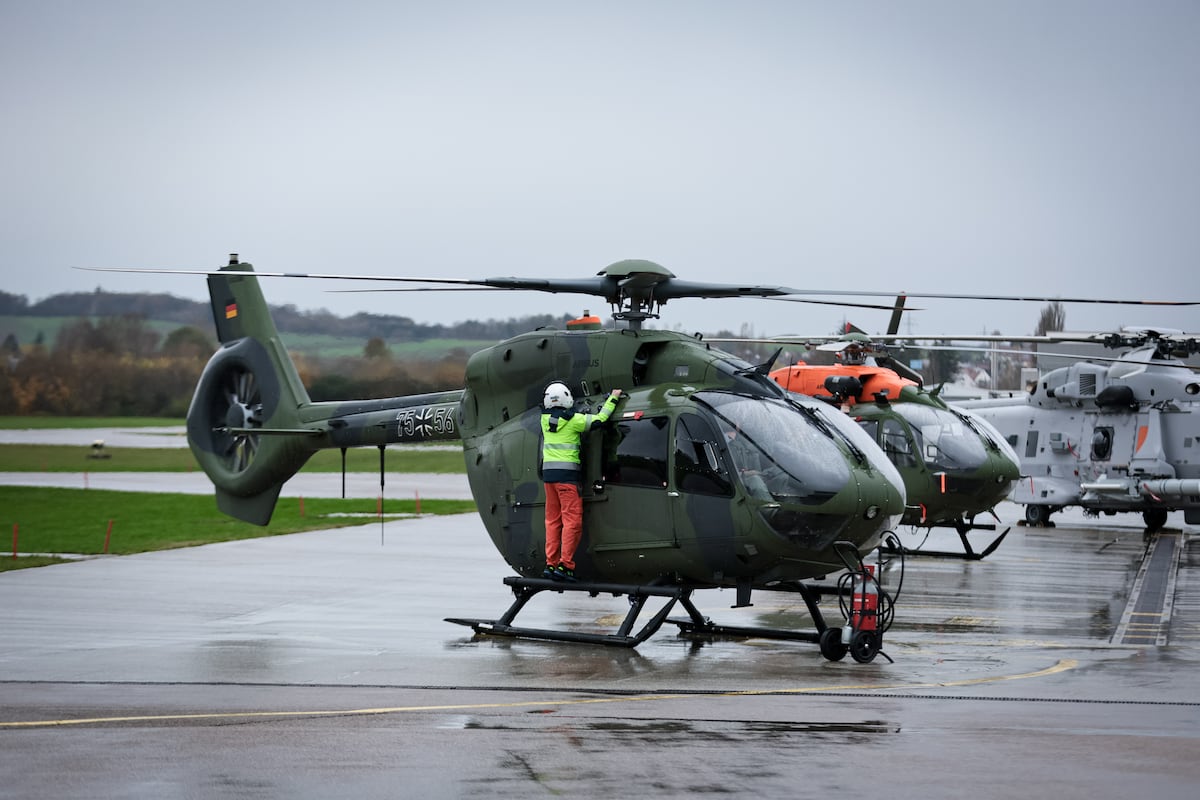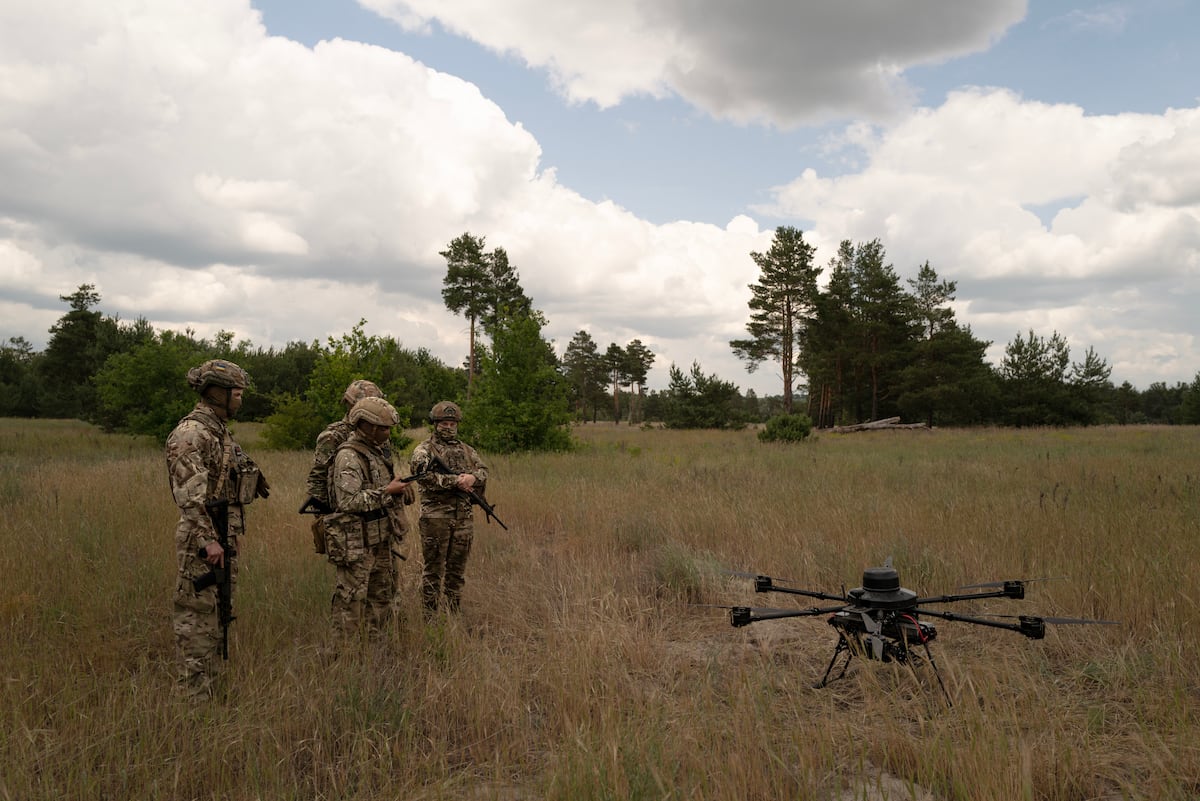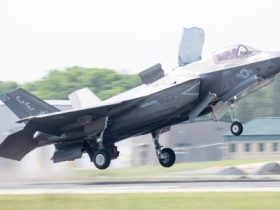PARIS — Airbus Helicopters is looking to translate success in Poland selling rotorcraft for civilian and para-public markets into military orders, offering the H145M as a versatile option for light attack and training missions, the company’s head of sales for Eastern Europe said.
The twin-engine H145 can serve as an advanced training platform, bridging the gap to heavier helicopters acquired by Poland such as the Apache, while being agile and large enough to provide a multi-role capability, Ludovic Boistot, Airbus Helicopters vice president of sales Eastern Europe and CIS, told Defense News in an interview last week ahead of the Paris Air show.
“We are a key partner to Poland, but in the civil and para-public sectors,” Boistot said. “We are trying to demonstrate that Airbus Helicopters is a good partner, also for defense.”
The bid to sell the H145 light utility helicopter comes more than eight years after Poland scrapped a purchase of Airbus H225M tactical-transport helicopters, following a change of government, and prompting a legal fight by Airbus for compensation. Now the company is again looking to sell military helicopters to Poland, as the government of Prime Minister Donald Tusk signals openness to closer security cooperation with European partners including on defense procurement.
The Airbus Helicopters presence in the civilian market means the company has the setup to support Poland, according to Boistot. Airbus, Babcock and CAE signed a memorandum of understanding last month to partner on providing the Polish Air Force with H145M helicopters, training and simulation.
The company strategy in Poland is to be a partner, and Airbus Helicopters has trained more than 130 engineers there that work on key programs, according to Boistot. With European countries looking to develop their sovereignty, Airbus wants to propose a solution where local Polish entities have all capabilities to perform maintenance on the H145 and can integrate components, he said.
“In terms of cooperation, we have always been here, even if the defense market was not yet successful for us,” Boistot said.
The Polish Ministry of National Defence last year announced plans to buy 24 helicopters for pilot training that could partly replace the military’s Soviet-era Mil Mi-2 rotorcraft. The Polish Armed Forces own less than 60 such helicopters, not all of them operational. Poland upgraded 16 Mi-2s in 2018, enabling the military to use them for training purposes.
The H145 will be a “key element” in Poland, and Airbus Helicopters is sizing up local partners to address the Polish needs “in a structured way,” Boistot said. He said the approach to partnerships in Eastern Europe will vary from country to country, and the fact that Poland has local industry means working together makes sense.
The time frame and technical specification for the potential purchase of training helicopters are yet to be disclosed, a spokesman for the defense ministry told Defense News. Separately, Poland’s armaments agency on Friday announced that it cancelled a procurement process to buy an additional 32 Black Hawk helicopters.
A previous government led by Tusk decided in 2015 to buy 50 H225M Caracal helicopters from Airbus, but the purchase was canceled the following year after the right-wing Law and Justice party took over power in Poland.
As Poland ramps up defense spending in response to a threatening Russia, upgrading its helicopter fleet is one of the key modernization programs. In August 2024, Warsaw ordered 96 AH-64E Apache helicopters in a deal worth about $10 billion, with manufacturer Boeing scheduled to start deliveries in 2028.
With the H145 a reference in Europe in the light utility-helicopter segment, the Polish military buying the model would allow for interoperability and create opportunities for inter-governmental cooperation, according to Boistot.
Some competitors are offering to provide the entire helicopter and training package, whereas Airbus chose to work with Babcock and CAE rather than handle everything itself, something that Boistot said would have been difficult due to the complexity.
Whereas Leonardo has a local manufacturing presence, Airbus Helicopters is counting on knowledge transfer and training engineers locally as a key selling point, according to Boistot. He also said the Leonardo offer may be less suitable for the multi-role capability.
“We are quite confident that the solution we propose would make sense, and I think it’s also good for Poland at some point of time to work with Airbus Helicopters on defense,” Boistot said.
Manned-unmanned teaming, combining helicopters and drones, is another key selling point for Poland and Eastern Europe more broadly, according to the executive. Airbus is “quite advanced” on helicopters cooperating with drones, having performed multiple tests of crewed-uncrewed teaming, Boistot said.
Countries in Eastern Europe and Central Asia still operate hundreds of Soviet-era helicopter designs such as the Mi-8, Mi-17 and Mi-24, and will be a key growth market for helicopters, according to Boistot. Ukraine may also have to replace a lot of Mi-type helicopters, depending on how the war goes, he said.
The Airbus Helicopter head of sales for Eastern Europe said his team is “super busy,” with “a lot going on for most of the platforms.”
The H225 “remains a strong asset,” and prospects for sales in other countries look “promising,” Boistot said, declining to comment on whether countries in Eastern Europe are interested in the model. The executive said Airbus does not currently have a campaign to sell the helicopter in Poland, but would “happy to explain what our offer is now.”
Rudy Ruitenberg is a Europe correspondent for Defense News. He started his career at Bloomberg News and has experience reporting on technology, commodity markets and politics.
Read the full article here








Leave a Reply